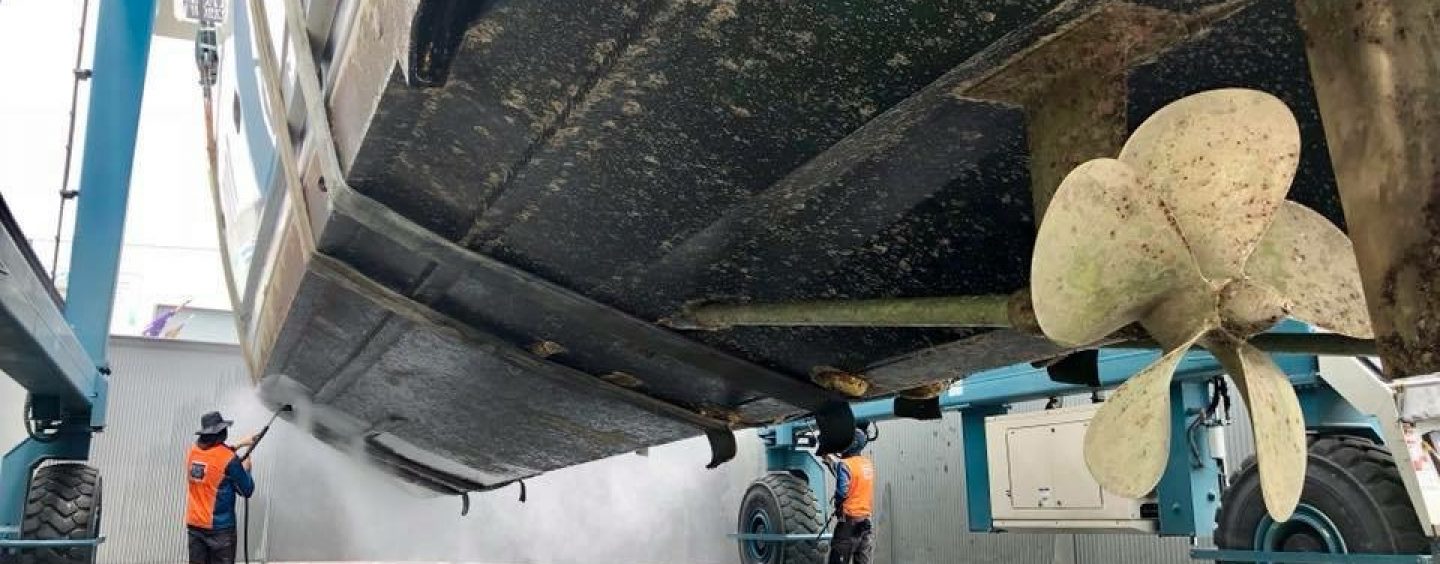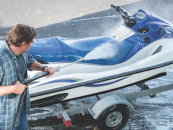Traditional wisdom holds that every 10 years, your boat hull should be inspected for osmosis. But what is “osmosis” and why is it a threat to your boat?
Jade Anderson, operations manager at Affordable Antifoul Solutions, based at The Boat Works, Coomera, says that osmosis is a term that is used a lot when it comes to repair and maintenance. “Osmosis is a process by which molecules of a solvent tend to pass through a semipermeable membrane from a less concentrated solution into a more concentrated one, and this produces a pimple-like effect on the hull. Your boat is a complex machine comprising running gear, skeg bearings, anodes and all the other underwater components,” says Jade. “It is so important to pull your vessel out of the water every 12 to 14 months, and have a close inspection of this crucial part of your vessel.”
Rod Twitchin, qualified surveyor and director of RTMarine, describes osmosis as the blistering found on many GRP boat hulls. “Water diffuses into a GRP hull and can collect and condense within voids in the laminate, forming a blister. At this stage, treatment will be required as the structural integrity of the hull can be affected. A professional boat surveyor will recognise the early signs of boat osmosis. If any blisters are evident at the time we are conducting an out-of-water hull inspection on a vessel with a solid fibreglass hull bottom, typically they will be one of the following two types of blisters:
“1. A blister that is within the antifoul or fairing only which is possibly a result of contamination or poor preparation when applying the fairing or antifoul system, and can be simply remedied by sanding and prepping at the time of antifouling; or,
“2. A blister that is considered osmosis is typically a result of moisture being trapped within the fibreglass below the gelcoat and or top coatings causing softening in those areas. Over long periods of time, this can affect the structural integrity of the hull in those areas. It is highly recommended all blistering is treated early to avoid any possibility of further water ingress into the hull.
“Depending on the type of blistering evident, best practice is a media blast to the hull bottom to allow a thorough inspection of the depth of the blistering. This will also allow the hull to completely dry out giving the repairer the best opportunity to conduct a thorough repair. If blistering is evident to any fibreglass on your vessel where it is cored, you should consult a surveyor or shipwright at your earliest convenience as this could be causing major structural issues and compromising the seaworthiness and safety of your vessel. Importantly, your insurer will ask for blistering to be remedied as part of their insurance cover for your vessel,” explains Rod.
Gone are the days when you just pulled your boat out and slapped some paint on the bottom with a house paint roller! The antifoul process is one of the most important parts of your maintenance cycle for your pride and joy, and you need the correct, qualified applicators for the application process. “When it comes to sand blasting, most boat owners are educated under the recommendation from us that the sand blast process should be considered around the 10-year mark,” Jade continues. “In a nut shell, sand blasting your vessel can remove years of antifoul build-up, chemical blisters from different antifoul applications, light osmosis blisters, and chemical bond composite failure.”
Marine Antifoul Solutions is another reputable tenant at The Boat Works that specialises in repair and maintenance. “We are focused on the repair methods and removal of the moisture to seal and secure,” says Peter Michalizcak. “Sandblasting can restore the boat’s surfaces. We find that it’s highly effective, and will save you time and money when the job is done right in the first place.”
The Boat Works has a 12m-dedicated Sandblasting Bay on site, fully screened with high-tech catchment for debris and wastewater. Even the worst cases of osmosis can be professionally treated, and will revive the boat and restore its value once done.
By Shane Subichin






























